
There’s no disputing that 2020 was the Year of Remote Work, but now it’s time to focus on the next defining shift in IT. Here are a few highlights from Lakeside’s recent webinar, “IT’s Time: Making 2021 the Year of Employee Experience.”
There’s no disputing that 2020 was the Year of Remote Work.
It wasn’t too long ago that pandemic-related lockdowns and restrictions forced enterprises around the globe to quickly hand out hardware, move users to virtual desktops and cloud-based apps — sometimes in a matter of days — and figure out how to support employees as they worked from home.
But as the end of the year approaches and that urgency continues to fade, the time is right to start focusing on another defining shift in IT.
During our recent webinar, “IT’s Time: Making 2021 the Year of Employee Experience,” Lakeside’s Chief Marketing Officer Bill Hobbib and guest speaker Andrew Hewitt, a Forrester analyst and employee experience (EX) expert, discussed how experience will likely take centerstage as enterprises refine their IT strategies for the coming year.
But why employee experience? Why now? And how can organizations make it a real priority going forward?
Here are a few quick highlights from the session:
Employee Experience Matters
Employee experience (EX) is the quality of workers’ interactions with their work environment.
Every work environment has different aspects that affect employee experience. The process of onboarding new hires, accommodating different work styles, and shaping company culture can all influence the way people think and feel about an organization.
And if the resulting employee experience is good, so are the business outcomes, including:
- Higher productivity
- More discretionary effort
- Better employee retention
Among the biggest influences on employee experience, though, is technology. Digital experience, sometimes used interchangeably with digital employee experience or end-user experience, reflects how well the technology works — or doesn’t — for employees and the resulting impact on productivity.
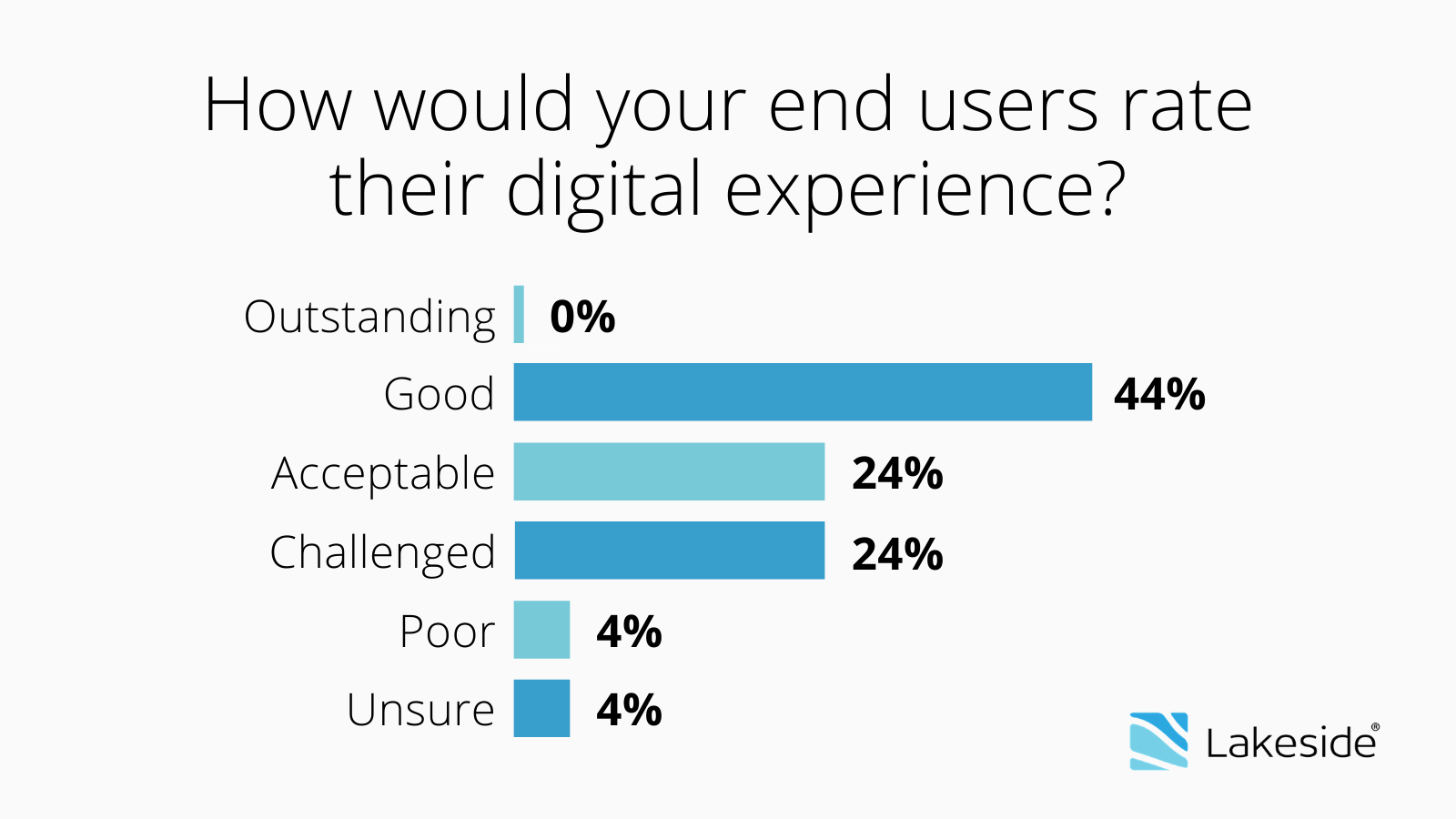
That puts a great deal of power in the hands of IT, which can influence experience — good or bad — engagement, and even the rate of user burnout with every deployment, update, and refresh.
The IT World Is Changing
The more important experience becomes, the less practical traditional IT proves to be.
The old ways of monitoring and management mainly focused on machines — not humans; kept tabs on assets without really considering the best way to utilize them; set standards based on technical capabilities, not actual user needs; and provided support only when an incident has already occurred.
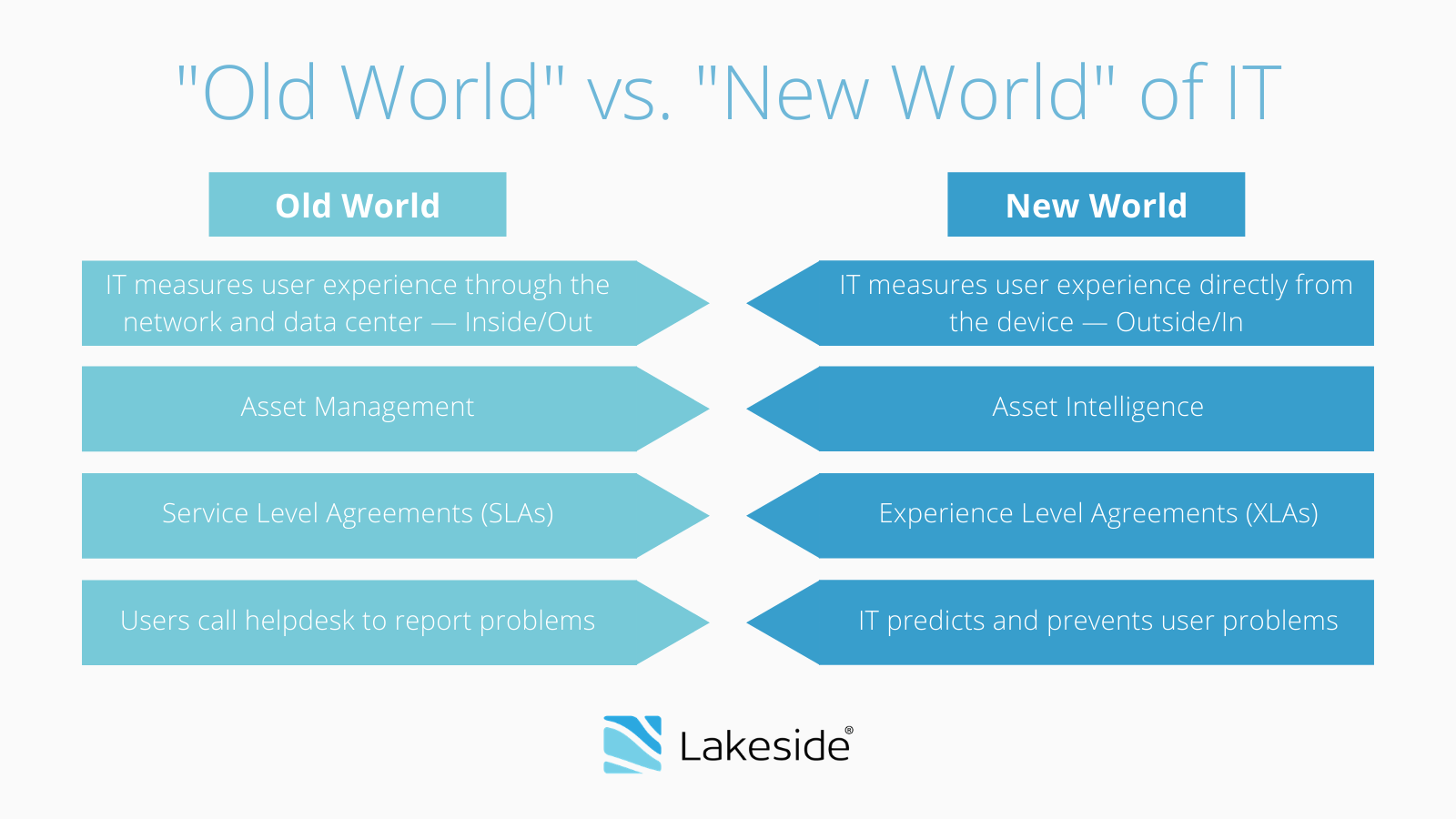
But as user expectations have grown, so has the need for IT to change its approach.
In the new world order, the focus is on people and their endpoint perspective; resource optimization with right-sizing and software rationalization; standards that ensure better digital experiences; and predicting and preventing incidents before they have a chance to impact users.
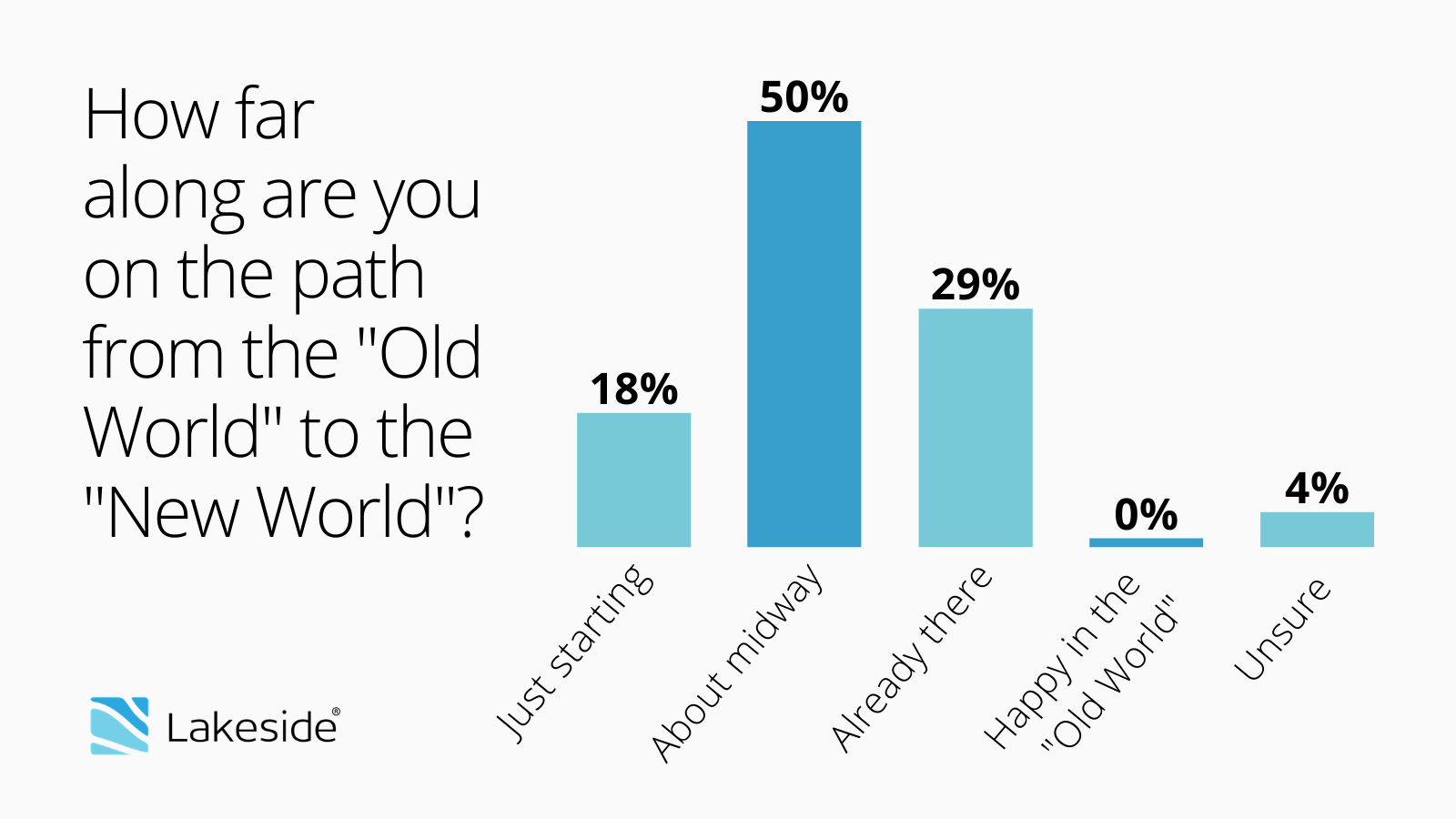
The result? A more agile, adaptive IT framework in which to prioritize employee experience.
10 IT Trends to Know
In addition to the gradual shift IT is making to better support employees and businesses, there are also more recent trends that are influencing IT strategies for 2021.
And all of them relate to remote work.
These top trends, based on conversations with Lakeside customers, include:
- Pressure on IT to ensure users are productive while working from home
- Remote work setups need refining
- Increased need for automation around end-user and endpoint monitoring
- Executive management now focusing on “Are employees being productive?”
- Actual reality of end-user experience today is often unclear or unknown
- New security issues as corporate devices are on unknown networks
- Tough tradeoffs between level of endpoint/desktop security and end-user performance
- Desktop virtualization wave continues
- Device replacements/refresh have been put on pause and will increase in 2021
- Difficulty ensuring performance of cloud-based apps outside corporate network
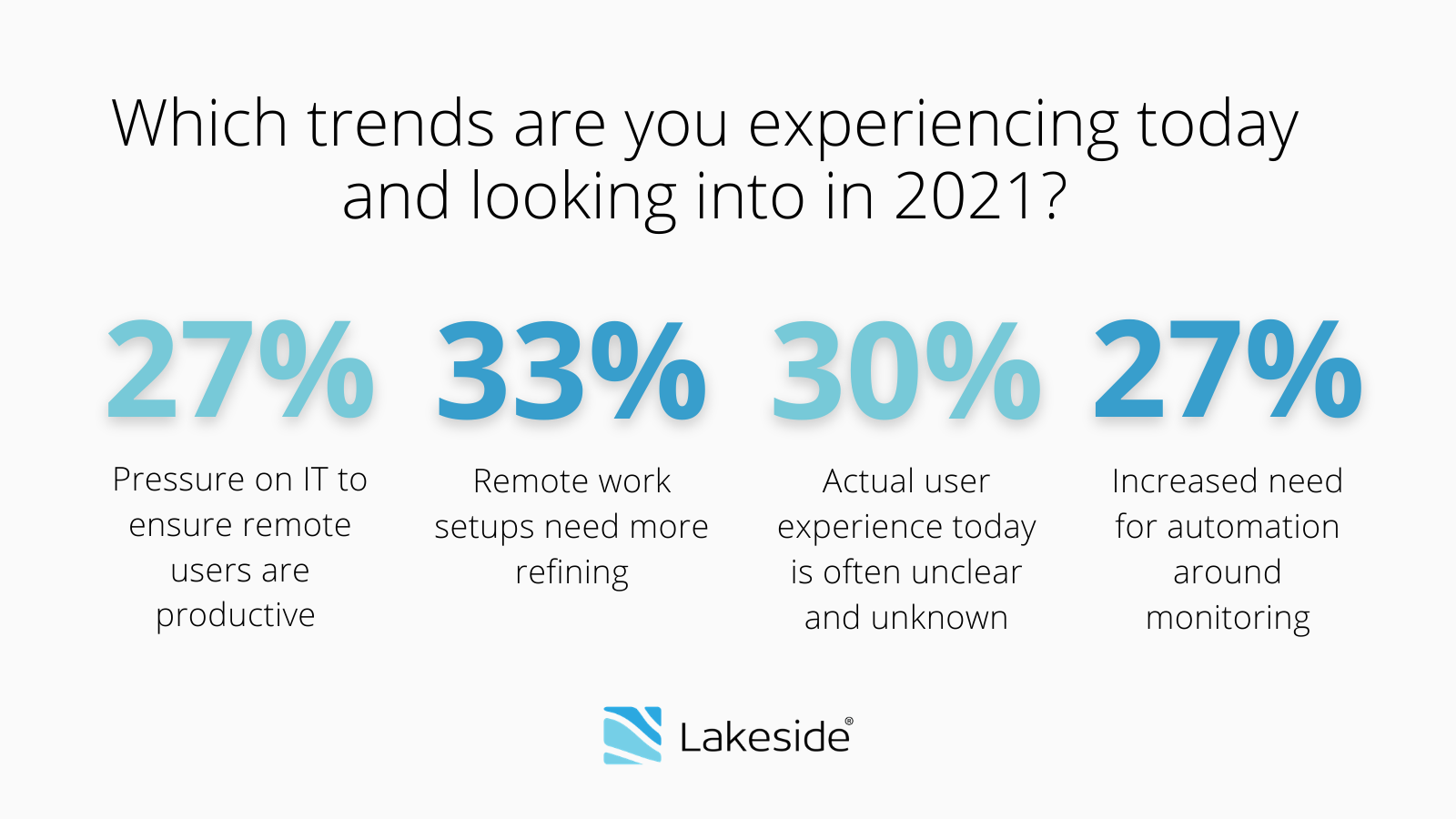
It’s a complicated to-do list that can have a big impact on employee experience. And in order to set effective priorities and goals for the coming year, more and more organizations are looking to data and analytics.
Where EUEM Comes In
End-User Experience Management (EUEM) is an agent-based solution that gives IT visibility into end-user experience by gathering and analyzing data directly from the endpoint, and facilitates predictive and preventative IT support.[1]
End-User Experience Management (EUEM) is an agent-based solution that gives IT visibility into end-user experience by gathering and analyzing data directly from the endpoint, and facilitates predictive and preventative IT support.[1]
Improving employee experience on a technology level requires a deeper understanding of digital interactions from the user perspective.
With end-user experience management, IT is able to gain that visibility directly from devices and track how employees connect to networks, use apps, and utilize resources such as CPU, memory, and storage.
Those metrics, along with user feedback, are what drive enterprises to make strategic decisions regarding employee experience, as well as face trending remote-work issues head-on.
Some other key benefits of EUEM include:
- Continuous improvement of digital experience
- Proactive incident management
- Reduction in mean time to resolution (MTTR)
- Desktop transformation projects
- License management
- Qualitative research and change management
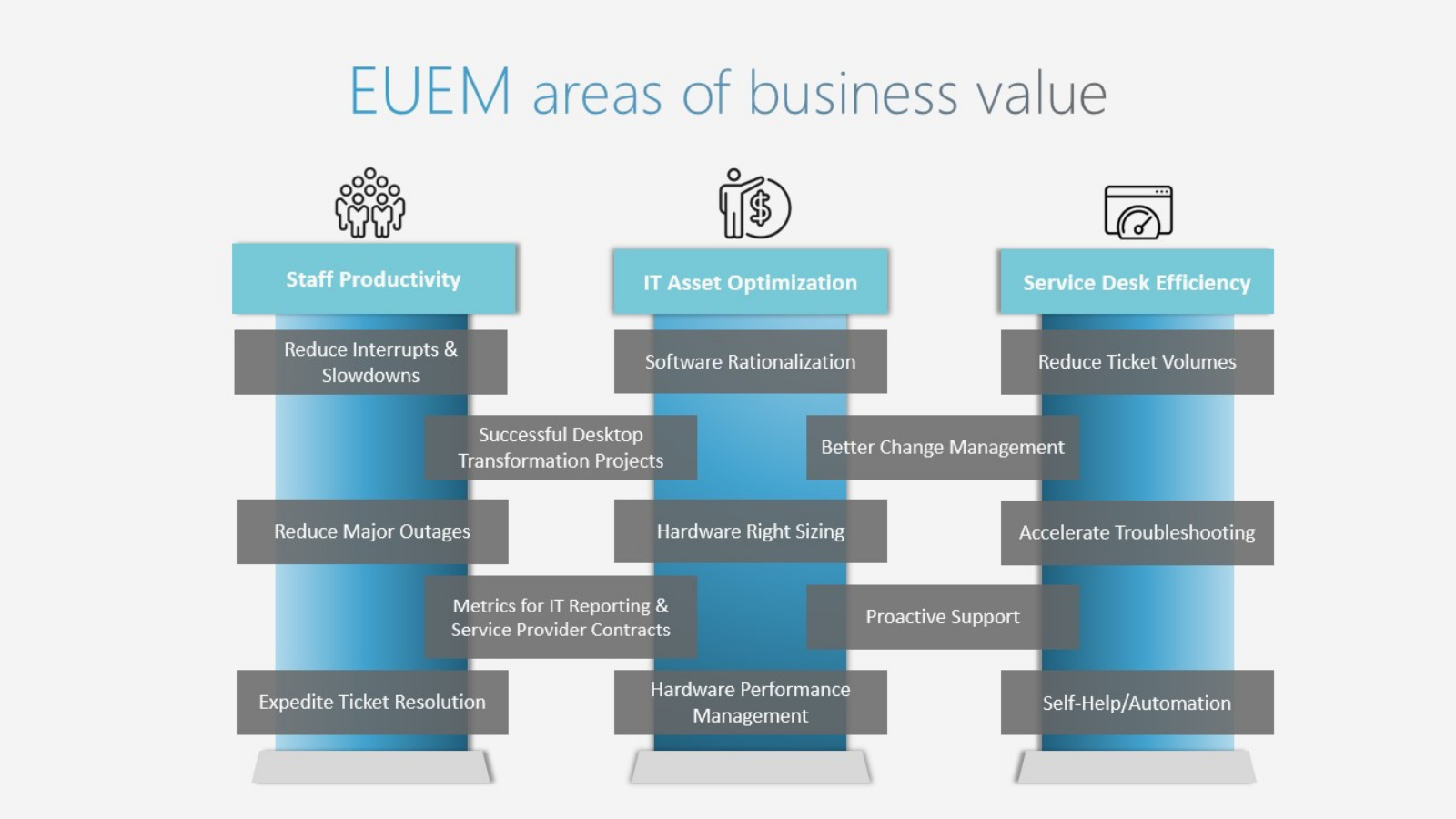
How SysTrack Can Drive Better EX
As we head into 2021, the challenge for organizations is clear: Help move IT toward the “New World,” take on remote-work challenges, and improve overall employee experience.
The only question is how to start such a massive undertaking.
From Lakeside’s perspective, the solution requires three key components:
- Broad, deep data
- Sophisticated detection capability
- Edge and cloud enablement
Using SysTrack, Lakeside’s EUEM solution that collects more than 10,000 metrics from the endpoint every 15 seconds, IT admins have access to that breadth of real-time data as well as historical trends to monitor user behavior and create a more detailed picture of the whole digital environment.
Leveraging AI capabilities and automation, SysTrack helps IT predict and remediate problems before users are impacted and without even assigning a technician. Meanwhile, its multi-tenant, cloud-native architecture makes it scalable and compatible with third-party applications.
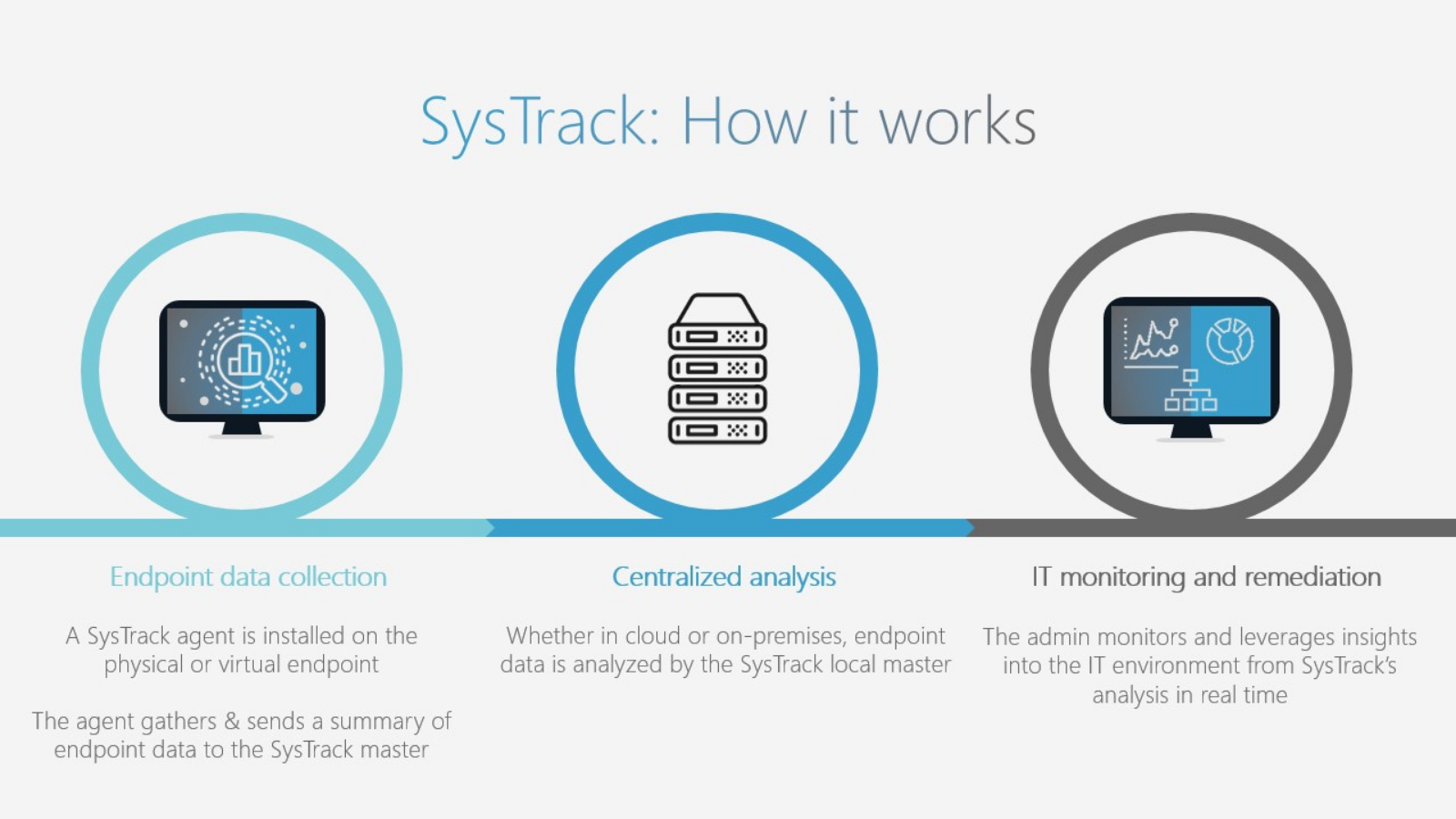
And as a named EUEM leader in The Forrester New Wave™: End-User Experience Management, Q4 2020 — authored by Hewitt — Lakeside has among the highest scores in the current offering category shown in the report. Lakeside also received a differentiated rating in telemetry collection, qualitative feedback, third-party integration, and roadmap criteria.
Not only does all this help SysTrack provide IT the means to improve employee experience on a day-to-day basis, but it also positions organizations to launch IT initiatives and build strategies that result in better business outcomes for next year and beyond.
1. Now Tech: End-User Experience Management, Q3 2020, Forrester Research, Inc., September 21, 2020
Subscribe to the Lakeside Newsletter
Receive platform tips, release updates, news and more



